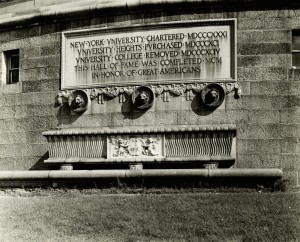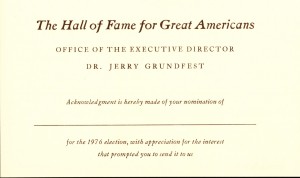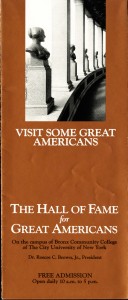Today the Hall of Fame for Great Americans fails to evoke the sense of grandeur it once had. Many consider it a site in decline and a symbol of a bygone era. The old shrine suffers from the 19th century ideal that someone can be objectively great, a notion that dissipated in the mid 20th century. Today, people are unsure about what constitutes a great American and how we should evaluate the historical figures from our past. Most importantly though, the site lacks diversity, with only a select few women or minorities elected. Although this criticism plagued the Hall in the past, it became much less acceptable to only elect white men. Its symbolism as a shrine to the American public began to wane.
In 1979, the Hall of Fame trustees decided to officially suspend elections. The last inductees, Clara Barton, Luther Burbank and Andrew Carnegie, never had busts commissioned, leaving an empty spot in the colonnade.
A number of the Hall of Fame electors contributed the decline of the shrine to NYU’s perceived abandonment of the Heights, but in 1972 only 15,000 people visited. The Hall of Fame is representative of just how fleeting fame is. Today the Hall of Fame trustees struggle to keep the site alive, but simply lack the funds. There is effort to bring more attention to this lost site, but in an age where everything from baseball to Rock and Roll has a hall of fame, the task proves difficult.
Click on the thumbnails below for more images of the Hall of Fame through the years.













